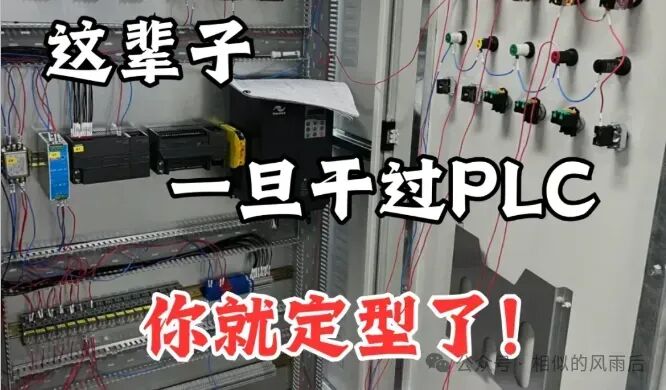
Introduction
Hello everyone! Today, I want to discuss a topic that excites and troubles many factory automation engineers — PLC multi-protocol compatibility technology.Don’t worry, I will explain this seemingly complex function in the simplest terms.Trust me, once you master this technology, your new and old devices can coexist harmoniously like “three generations of old, middle-aged, and young,” achieving seamless networking! Want to know how this is done?Keep reading!
What is Multi-Protocol Coexistence Technology?
Let’s start with an analogy. Imagine you are the organizer of an international conference, with participants from different countries speaking different languages. The traditional approach is like forcing everyone to speak the same language, which would leave some unable to express themselves; whereas multi-protocol coexistence technology is like providing each person with a smart translation headset, allowing everyone to communicate in their native language while still understanding each other.
In the field of industrial automation, PLC devices from different eras and brands may use different communication protocols such as Modbus, Profibus, EtherNet/IP. Multi-protocol coexistence technology enables these “language-incompatible” devices to communicate and work together.
Why Implement Multi-Protocol Compatibility?
You might ask, “My old equipment is running fine, why bother with protocol compatibility?”
Let me illustrate with a few harsh real-world examples:
-
The Necessity of Mixing New and Old Equipment: “It’s impossible to replace an entire production line just for a new sensor!” This is the most common complaint I hear on-site with clients.
-
The Pressure of Protocol Standard Iteration: Old equipment uses Profibus, new equipment uses Profinet, how do we connect them?
-
The Dilemma of Vendor Lock-in: A single protocol means being “kidnapped” by a specific brand, and spare parts can be exorbitantly priced.
Three Major Solutions for Multi-Protocol Coexistence
1. Protocol Conversion Gateway (Most Common)
Like simultaneous interpretation equipment at a conference, protocol gateways convert data packets between different protocols in real-time. For example:
-
Convert Modbus RTU to EtherNet/IP
-
Convert Profibus DP to Profinet IRT
Advantages: Plug-and-play, no need to modify existing programs
Note: Pay attention to conversion latency (usually <10ms is acceptable)
2. Dual-Protocol Stack PLC (High-End Solution)
Next-generation PLCs (such as Siemens S7-1500, Rockwell ControlLogix) come with built-in multi-protocol support, like a super translator that speaks eight languages.
Typical configuration example:
// The same PLC running two protocols simultaneously
PROFINET_IO.Enable := TRUE;
EtherNet/IP.Enable := TRUE;3. Software-Defined Networking (Future Trend)
Using SDN technology to dynamically allocate protocol resources, like a smart traffic system that automatically adjusts lane directions based on traffic flow.
Case Study: The Turnaround of an Automotive Welding Workshop
A German automotive company’s welding line faced:
-
10 units of 1998 Siemens S5 PLC (only using Profibus)
-
5 units of 2020 KUKA Robots (only supporting Profinet)
Solution:
-
Deploy Hilscher netTAP gateway at key nodes
-
Perform non-intrusive upgrades on old PLCs (without modifying existing programs)
-
Establish a protocol conversion mapping table:
| Original Address (Profibus) | Converted Address (Profinet) |
|——————|———————|
| DB10.DBW4 | Input_Area.Word[0] |
Results:
-
Networking costs reduced by 70% (compared to a complete overhaul)
-
Communication failure rate dropped from 15 times a month to 0
-
Reserved interfaces for future 5G+TSN upgrades
Pitfall Guide (Lessons Learned)
-
Clock Synchronization Issues: Devices using different protocols may **“each operate in their own time zone”**, be sure to configure an NTP server
-
Data Alignment Traps:
(There was once an engineer who lost half a month’s production because of this)
-
Modbus uses big-endian
-
Siemens uses little-endian
Preparation of Diagnostic Tools:
-
Wireshark for packet capture (to view raw data flow)
-
Vendor-specific diagnostic software (like PRONETA)
How to Start Your Multi-Protocol Journey?
-
Map Out Protocols: List all devices’ communication requirements, like creating a multi-language conference manual
-
Select Transition Solutions:
-
Short-term: Protocol converters
-
Long-term: Gradually migrate to unified architectures like OPC UA
Establish a Testing Sandbox: Always run a pilot test in a small scope first!
Thought-Provoking Questions
-
Are there **”protocol islands”** in your factory? Which device is the most troublesome?
-
If budget were unlimited, would you choose a complete overhaul or protocol compatibility? Why?
-
What protocol conversion tools have you used? How effective were they?
Conclusion
Multi-protocol coexistence technology is not a simple compromise, but rather the survival wisdom of the Industry 4.0 era. Remember:“The best system is not built with the latest devices, but one that maximizes the value of each device!”
Feel free to share your protocol war stories in the comments, and the top three liked comments will receive an electronic version of my compiled “Industrial Protocol Conversion Secrets”!
Share itSave itView itLike it